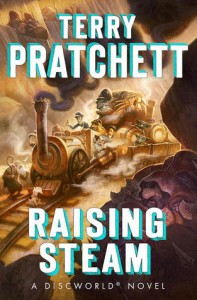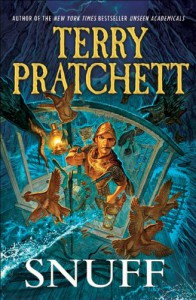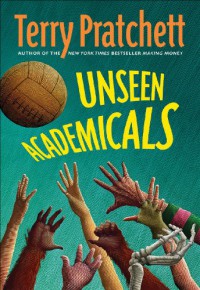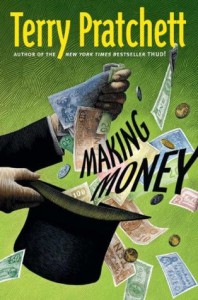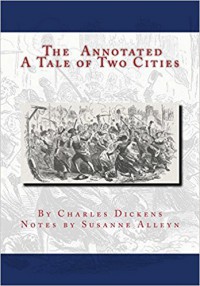
Ramblings about the Book
People who follow me may have seen me mention my intent to fit one non-SF&F classic per quarter into my heavily SF&F-based reading diet. A Tale of Two Cities was my classic reading selection for the second quarter. Last time, I chose an author and book that was completely new to me. This time, I chose a book that I had been assigned to read in tenth grade but that I didn’t enjoy at the time and in fact didn’t remember at all about 25 years later.
My interest in this story fluctuated a little bit, especially in the first half, but I enjoyed it quite a bit by the end. The first chapter starts in 1775, and the book was written by Dickens in 1859, so I guess that makes this historical fiction squared. :) It’s set just before and during the French Revolution, which is a period of time I knew little about. No doubt we discussed it in my tenth grade class, but those were the types of lessons that usually had me sneaking to read my own book if I was well-positioned to do so without getting caught, or nodding off in boredom if I wasn’t…
The characters never really grabbed me, except maybe toward the end. Lucie in particular was hard for me to appreciate. Dickens tells us about her impact on others but, for the most part, she just seemed to sit around and act distressed or sympathetic or on the verge of fainting without actually doing or saying much. It's an interesting contrast with the more vivacious female characters in my previous classic selection, Pride and Prejudice. Of all the characters, I think Lorry was the one who felt the most genuine to me, and he was the one I liked best. Carton did grow on me quite a bit too, though. I didn’t dislike the others; I just didn’t feel too invested in them.
Everything is very heavily foreshadowed. This story didn’t hold many surprises, except for a few small ones, because the author telegraphed everything well in advance. I was a little over halfway through the book when I finally put two and two together and predicted (correctly) how the book was going to end. In fact, I felt a little silly for not realizing it at least a couple chapters sooner. It’s possible that I subconsciously remembered it from 25 years ago, but the book never felt at all familiar to me as I read it. Well, aside from the opening words anyway. Despite knowing how things were going to end, I did get really caught up in the story and the emotion of what was happening in the later chapters.
Ramblings about Annotations
Knowing I didn’t like this book as a teen, I was more nervous about reading it than I otherwise would have been, so I decided to get an annotated version. I think this was the first time I’ve read anything annotated, and I had trouble finding the right balance. I don’t normally skim when I read books. If the words are there, I’m going to read them. If my eyes glaze over and I don’t absorb them, I’ll probably go back and read them again. So you might be able to imagine how I tackled the annotations at first. I read every single one of them within the segment where they were presented. In some of the introductory chapters, there were so many that I lost the flow of the story and had to go back and re-read the chapter afterward. This may have contributed to my trouble getting into the story, but many of the annotations were very interesting, and I think more historically informative than the story itself, so I did want to read them.
On the other hand, the annotations were sometimes repetitive, and many of the terms that were explained were very obvious within the context and didn’t, in my opinion, need explaining. I guess younger teens and/or people who don’t read as much would appreciate them more. Also, people with holes in their head. The ones that gave historical context were the ones I enjoyed the most, when they weren’t repetitive. For example, I got really, really tired of reading reminders that Dickens was using the title “Monseigneur” in a historically inappropriate manner. I understood it the first time, really!
About halfway through the book, I started feeling really bogged down by annotations and I started to lose interest in them. I finally managed to talk myself into skipping them, and I was glad I did. I’m sure I missed out on other things of interest, but I had reached my limit. I wasn’t even tempted to go back and skim through the ones I skipped after finishing the book. If I read other annotated works, I’ll have to try different tactics to figure out what works best for me. I think, as people have suggested, reading the story by itself and then going back to the annotations afterward will be the best course of action, with the occasional pause to read an annotation during my initial read if I see one tied to something that confused me.
Rambling Summary
Wow, that was a lot of rambling even for me! I tend to have a rating in mind as I read a book, mentally adjusting it as my opinions change. This book was no more than 3 stars for quite a while, but it grew on me and I mentally adjusted it to 3.5. It wasn’t until I finished the book and reflected on how much I enjoyed the last few chapters and the way everything tied together that I realized I couldn’t give it less than 4. Maybe I didn’t love it as much as many other people do, but I did appreciate it and I hope to give more of Dickens’ work a try someday.



 2
2


 2
2
